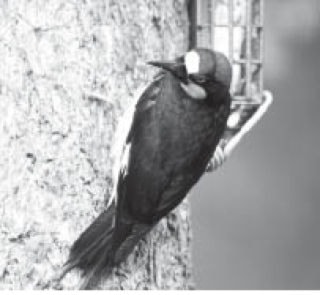How many different species of birds are there around Princeton? This is one of the questions that can be answered by a very active Vermilion Forks Field Naturalists Club. Back in December of 1991, the VFFN did a test count of birds in the Princeton area. The count was successful and convinced the group that it would be a worthwhile thing to do in the area on an annual basis. The rest is history.
“In the early 1900’s people used to go out and shoot anything that moved in North America on January 1,” said bird watcher/counter Madelone Schouten. “Biologist Frank Chapman changed the course of history when he suggested that instead of shooting everything, that people should record it. Since then,, Christmas bird counts have become the new tradition.”
VFFN President Kathy Yingling coordinated this years bird count “which had a really good turn out in spite of the cold weather,” stated Schouten. Twenty bird counters headed out in the hills and nine watched their feeders for as many species of birds as they could possibly spot. “Each year we have interesting results,” Schouten reported. All the data gathered by the local group is submitted to the Audubon Society. They in turn collate the information from all across Canada, the U.S., Mexico and South America. It’s a huge effort,” Schouten continued. “It can’t just be done by anyone either. People need to know what they are looking at.” The airport is the center of a 15 kilometer diameter circle that the VFFN members work from in doing their count. They head off in every direction. “Fourteen counters stayed in town and there were six out of town,” said Schoulten. “Its usually great fun and this year was no different in spite of the weather.”
“The day ended with a great spread laid out for the group by Mrs. Kunderman from Santos,” said Schoulten started off with some nice hot coffee.”
The counters reported 54 bird species sightings. “We had some unusual birds and some unusual numbers,” Schoulten stated. Amongst the unusual was a urasion coloured dove which escaped as a caged bird and is now breeding in the wild. “They have been spotted before in Cawston, but not here,” said Schoulten . Other discoveries included Canada Geese, Mallards, Ruffed Grouse, the Snipe (which is a shoreline bird) and a high number of finches. Another unusual sighting was the sighting of two western bluebirds. “What was really amazing about that,” Schoulten admitted is that they are birds that normally feed on insects.”
While some birds seem to be thriving, Schoulten was quick to mention that others are not. The Evening Grosbeak is a bird of concern and they are not coming back to certain areas. The opposite could be said for red-winged blackbirds which would normally be gone by now. “I think some of them are getting enough from local bird lovers feeders.” Six hundred and forty eight ravens were spotted and 235 crows. Oen Barred Owl made the cut.
Dick Cannings a top birder in the province has been coming for years to help out with t the local count. “He is our western coordinator,” said Schoulten. “he collects data from B.C., Alberta, and Saskatchewan. “He is really terrific and I have known his since he was about 11,” Schoulten continued.
Schoulten is not Canadian born, but believes that the love for birds is universal. Born in India, she spent time with her father where he patrolled a plantation fertile with tea, coffee and rubber. “Right from childhood, I was interested in nature,” said Schoulten. “My father identified things and we spent our holidays camping. Schoulten lived in Briain for years and said that “in Britain every morning the bird has to sing. I thought there would be a choir in B.C..
For many members of VFFN counting birds is just one of the ways they enjoy nature. “For me it is a hobby and a passion,” Schoulten stated. Schlulten started the VFFN after moving to Princeton after finding out there wasn’t a naturalist club already in town. “I was really surprised when I found that out,” she continued. “I put up a notice at the library and to my enormous surprise 14 people signed up.”
From what was formed to what now is the Vermilion Forks Field Naturalists have transformed their club from an egg into an eagle that soars overhead. They gradually began to grow and are today a huge asset to the community. Their bird count is part of the big picture and a flashback at history. “We don’t want to see more of our birds disappear,” Schoulten continued. “These counts are important and I will keep doing them with the group until I can’t do them anymore.”
